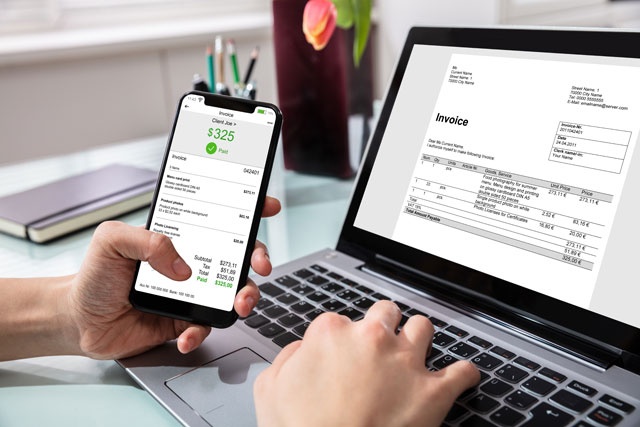Essentially, by legal definition, a default is a failure to perform a legal duty.
Specifically, where a loan is concerned, a default occurs when a borrower fails to make their loan payments on time or fails to meet some of the provisional conditions of the loan agreement. Officially, however, a default is declared when the holder of the loan concludes that the borrower has zero intentions of repaying the money borrowed.
To be clear though, default is different from that of "Insolvency" whereby a debtor is unable to pay his debts and "Bankruptcy", a legal determination imposing court supervision over the financial affairs of one who has been declared insolvent or in default.
Under the general heading of default, there are two primary types:
- Debt Services Default is when the borrower has failed to make a scheduled payment toward either the principal or interest.
- Technical Default is when an affirmative or a negative covenant has been violated. Due to the nature of the activity, such defaults tend to pertain to corporate loans.
Affirmative covenants are clauses in debt contracts that require corporate firms to maintain specified levels of capital (or specifically laid out financial ratios). The most common violations of affirmative covenants are tangible net worth, working capital, short term liquidity, and debt service coverage.
In contrast, negative covenants are clauses in debt contracts that place specific limitations or prohibitions on specific corporate actions (for instance, sales of assets, or payments of dividends) that could alter the status of the investors and creditors. Negative covenants may be construed as either ongoing or as a singular occurrence.
Each individual loan has its own timetable. While some may give the borrower 180 days to fall behind, others may only allow 60 days before clamping down on enforcements to get them to repay (or else they declare the loan to be in default).
Once again, while wholly dependent on the type of loan and the loan amount, the standard protocol for a loan viewed to be in default is as follows:
Contact with the borrower with the aim of re-establishing some form of regular payment schedule. Should such efforts prove to be non-productive then the next step is to send the account out to an outside collection agency where they will attempt to connect with the borrower and make acceptable payment arrangements.
Should none of the aforementioned steps yield successful results then, depending on the type of loan, a range of different outcome scenarios could materialize.
For example, in the case of defaulting on a government issued school loan, there is a federal regulation mandate requiring that borrowers provide regular updates as to their payment progress, failure to do so results in the issuance of a negative notation on their credit record.
Whereas a car loan may be concerned, should attempts to obtain owed payments not yield desirable results, then the end action may be to repossess the car.
While at times it may be unavoidable (change of living status for the borrower, major life crisis, or other circumstances), in order to avoid the foreseeable default route, traditional lending practices assume there are two types of borrowers, good and bad.
Banks try to determine a borrower's:
� Ability to repay loan.
� Willingness to repay loan.
Simply put, good borrowers repay their loans, bad borrowers do not.
At times, loan officers may receive applications from those individuals who fall under the bad borrower category. And, though not foreseen to be good borrowers, the loan officer may take into consideration the probability that they will default on the loan (or vice versa, the probability that they will repay it).
-
Default Risk. The likelihood a borrower will default on a loan.
-
Default Premium. A return above the risk free rate required to compensate for the risk of default.
If still foreseen as being a potentially worthwhile endeavor, lending institutions (and loan officers) can then extend a loan to a higher risk borrower and to compensate for the added element of uncertainty, charge a higher rate of return
Example:
$5,000 = Borrower principal.
6.0% = Interest Rate.
3.0% = Default Premium.
How exactly does a financial institution analyze a borrower to assign a credit rating?
Ultimately, such a decision is based upon the Five C's:
-
Character (reputation). The central factor in a borrower's willingness to repay a loan, relating to honesty and integrity, it involves timely disclosures of pertinent information (both good and bad) and the idea that slow payers are better than non-payers.
-
Capacity (cash flow). The ability to generate liquidity in the loan repayment process, cash flow must be perceptible in the future along with favorable conditions relating to asset accumulations and equity issues. As one would expect, borrowers with stable cash flows are preferred.
-
Capital (real net worth). The true net worth of a person or company is a very strong indicator that a loan is likely to be repaid. While debt always looms above equity, equity acts as a buffer to those who hold debt.
-
Collateral (security). The ability to provide security in the form of tangible goods that can be repossessed in the event of a default on the loan. While viewed to be an option of last resort, it does represent value in exchange for liquidity and, thus, lowers the risk associated with the loan.
-
Conditions (economic environment/market risk). The degree to which the current economic environment and business climate will affect a borrower's ability to repay a loan. An external factor, the economic quotient is literally out of the borrower's control.
Down to a science, combining the previously discussed 5 C's (character, capacity, capital, collateral, and conditions) with the quality of the information collected, lending institutions actually have a formula for calculating the likelihood a borrower will default on their loan:
Pr {default} = f {-}
� Quality of information collected.
� Character of borrower.
� Stability of cash flows.
� Real net worth.
� Guarantees.
As the levels of these categories diminishes, the probability of default increases.
While there are many mechanisms in place to guide loan officers and to help them stay clear of possible borrowers who default on their loans, the risk assessment process remains an inexact science.
Loan officers can attempt to lessen the associated risk of those who are less than stellar loan candidates, yet in the end they cannot always predict who may fall short in repaying their loan.






























